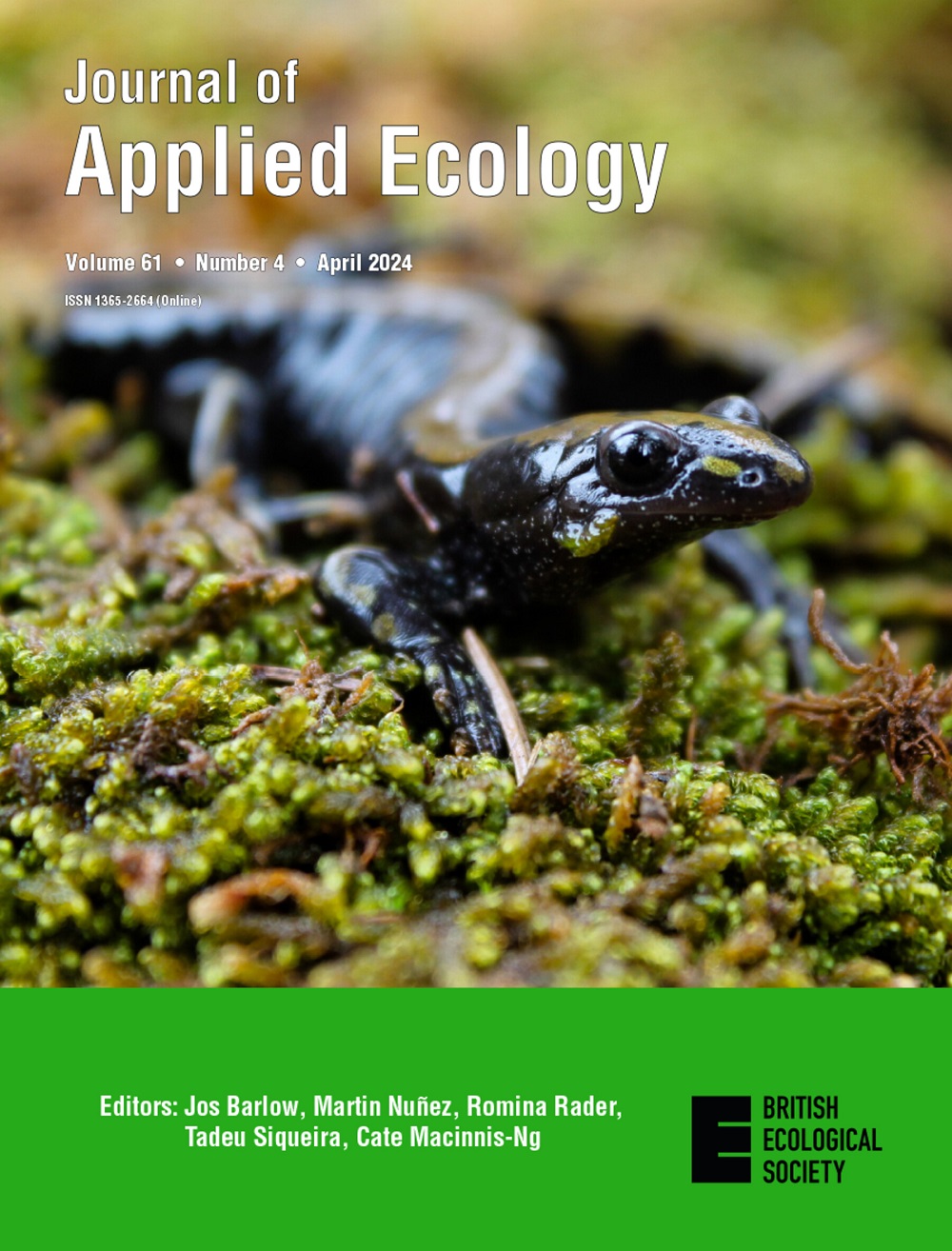Flight behaviour of Red Kites within their breeding area in relation to local weather variables: Conclusions with regard to wind turbine collision mitigation
IF 4.8
1区 环境科学与生态学
Q1 BIODIVERSITY CONSERVATION
引用次数: 0
Abstract

红鸢在其繁殖区内的飞行行为与当地天气变量的关系:关于减少风力涡轮机碰撞的结论
鸟类和蝙蝠很容易与风力涡轮机发生碰撞。为了减少蝙蝠碰撞的次数,通常会使用天气变量,在出现某种天气变量时关闭风力涡轮机。这种通用方法对减少猛禽碰撞也很有意义。需要对飞行行为与天气变量之间的关系进行研究。为了研究猛禽在其繁殖区内的飞行行为与当地天气变量之间的关系,我们使用了在风能试验场(德国)收集到的红鸢飞行轨迹的高分辨率数据。使用激光测距仪(LRF)或全球定位系统(GPS)发射器对鸟类进行跟踪。现场连续记录了天气变量。我们使用广义线性混合模型来分析天气变量和测量方法对不同飞行参数的影响。此外,我们还研究了在由三个轮毂高度(84、94 和 140 米;直径:112 米)定义的虚拟旋翼高度范围内飞行的概率。LRF 测得的飞行高度中值(52.5 米,95% CI:44.9-61.0,N = 2511)比 GPS 修正值(27.8 米,95% CI:24.7-31.2,N = 6792)平均高出 25 米。不同方法的飞行速度也存在差异(GPS:29.2 km/h,95% CI:28.2-30.3 km/h;LRF:25.1 km/h,95% CI:24.0-26.3 km/h)。天气变量的影响较弱。在潮湿(潮湿、多雨或多雾)天气中,鸟类的飞行次数和飞行高度往往低于干燥天气;在强风天气中,鸟类的飞行次数和飞行高度往往低于弱风天气。在虚拟旋翼高度范围内飞行的概率随着轮毂高度的降低而增加,因此离地间隙也随之降低。综合与应用:飞行行为变化很大。在整个飞行季节的所有天气条件下,全天都有不同高度的飞行。需要进一步研究飞行行为、天气变量、碰撞和其他因素之间的关系,以此为基础制定普遍适用于猛禽的停机制度。不同测量方法得出的平均飞行高度和速度是不同的。研究得出的任何数值都应根据测量方法进行解释。
本文章由计算机程序翻译,如有差异,请以英文原文为准。
求助全文
约1分钟内获得全文
求助全文
来源期刊

Journal of Applied Ecology
环境科学-生态学
CiteScore
9.80
自引率
3.50%
发文量
229
审稿时长
4.5 months
期刊介绍:
Journal of Applied Ecology publishes novel, high-impact papers on the interface between ecological science and the management of biological resources.The editors encourage contributions that use applied ecological problems to test and develop basic theory, although there must be clear potential for impact on the management of the environment.
 求助内容:
求助内容: 应助结果提醒方式:
应助结果提醒方式:


